Replacement Oil Cap Kit for 9,000-lb to 15,000-lb Dexter Axle

Thank you! Your comment has been submitted successfully. You should be able to view your question/comment here within a few days.
Error submitting comment. Please try again momentarily.
- All Info
- Reviews (88)
- Q & A (0)
- Videos (2)
- Photos
Redline Trailer Bearings Races Seals Caps - RG04-270
- Caps
- Oil Cap
- 3.984 Inch O.D.
- Redline
Replaces the oil cap, O-ring, and plug for your Dexter axle. Fits 9,000-lb axles manufactured from 10/89 to 7/09, 10,000-lb axles manufactured prior to 7/09, and 12,000-lb and 15,000-lb heavy-duty axles.
Features:
- Replaces Dexter 21-36 oil cap
- Fits:
- 9,000-lb Axles manufactured from October 1989 to July 2009
- 10,000-lb Axles manufactured prior to July 2009
- 12,000-lb and 15,000-lb Heavy-duty axles
- Includes oil cap, O-ring, and plug
Specs:
- Dimensions:
- Overall diameter: 4.36"
- Threaded diameter: 3.97"
- Inside diameter: 3.59"
RG04-270 Redline Trailer Parts Pro Replacement Oil Cap Kit for 9,000-lb to 15,000-lb Dexter Axle
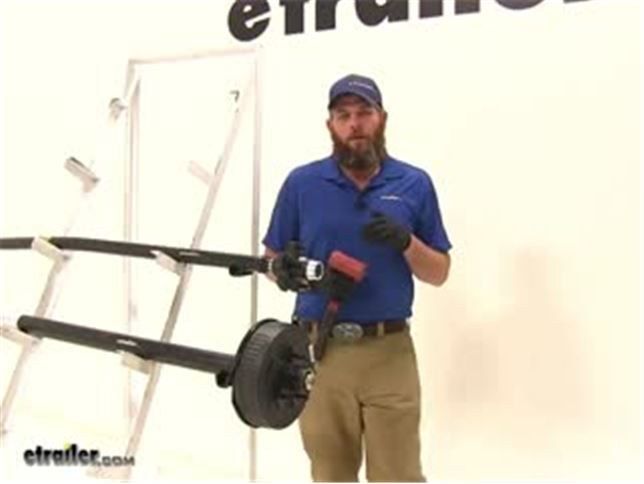

Videos are provided as a guide only. Refer to manufacturer installation instructions and specs for complete information.
Video Transcript for Trailer Bearings Races Seals and Caps Rebuild
Speaker 1: Today we're going to take you through the rebuild process on a couple of hubs. We've got an idler hub, and here we've got a hub and drum assembly. Works with electric rigs, but this can also work for just standard discs, if you've got a disc brake style setup.Basically what we're going to show you is how to get all of the bearings out. How to remove the seal. How to remove the race's if they're damaged, then get them replaced in the proper manner. We'll show you how to use an easy loop hub, which we have here.The first thing we are going to need to do is, get the grease cap off the end.
It can have either a rubber plug in it like this one does, or it can be a solid metal cap.These are pressed fit in there, basically by tapping on them on the back side. To remove them, a deadbolt hammer is typically what we're going to use. We're just going to start tapping as we go around. You'll see a little separation start right here, and slowly it'll work it's way off.Now the next step's going to vary a little bit depending on your axle setup. Do you see this is going to have a keeper that goes around the nut.
And that prevents that from being backed off, or removed. A lot of times you'll have a castle nut, which will have just little tabs that stick off, and there will be a cotter pin that passes through it. Just depending on your application, you need to get the keeper for the nut off. This style we just kind of pry out. A cotter pin you would just remove of course.Once we have that off ...
We'll start to take off the nut here, and the washer that's in behind it. Now yours should look a whole lot more dirty than this. There should be a lot of grease packed in, and through the hub, this one's brand new. We thought it'd be nice to show you the components before the grease was on .. Of our washer that comes off.And then here we're going to have our outer bearing.
Continue to pull that. We're gonig to have our inner bearing here. That sits in the backside of the hub. And we didn't put it in yet, we will show you how to put it in. But a seal would typically be covering the backside here. We'll show you how to use a seal removal tool, or another tool. To get that pried up and out. To get an access to that inner bearing.Now for a drum style like this, that process for disassembly is going to be just the same. One thing to keep in mind if you're using a disc brake setup. You'll have to remove the caliper before the disc is going to come off.Now once we have the spindle exposed, as we said this is going to be really greasy. We want to get all the grease removed, and the first thing we'll do is inspect it. We want to make sure that it looks just like what we have here. Everything's nice and smooth. We don't see any kind of discoloration, or any marring on the metal. Indicating that our bearing's got hot.If you do have any of those symptoms, at this point it's time to replace those bearings. You don't want to repack them. Get new bearings, and put in there. You might have a bearing that's come apart in here. Another surface to ensure is in good condition, is where your seal is going to go. That helps seal all the grease inside of our hub. With a damaged or broken seal, that grease is going to seep out. Either out of the hub, or in this case into our brake assembly.Now if your axle has brakes, we're also going to check the disc. Make sure it doesn't have any issues, or your hub. And this is going to be a hub and drum assembly. The brakes are going to ride on this machine surface. You're going to check that for signs of excessive heat, discoloration, or cracking. And this is our magnet surface. We'll check that surface for the same issues.Now inside the hub regardless if it's a disc brake, it's a drum brake like this. Or just a standard idler style hub. You're going to have an outer race. Would be right here, it's a small tapered piece of metal your bearing sits in, and rotates on. That's basically the outer portion of the bearing.You have the same thing here on the backside. This is called the inner race. Now if those show any signs of wear, overheating, or cracking. Those are also something we'll need to replace, which we'll show you how to do in just a minute.Now, with your brake assembly exposed, if you do have electric brakes like we have here. It's a good idea to check all the components for wear, cracking, maybe missing pieces. Check your pad thickness to make sure those are in good shape. Basically if you have a non working brake assembly and you put everything back together, you're just going to have to take it apart and do it all over again to get back to the brake assembly. This gives you a really good option to be able to change them out.And most applications are going to use a four, or maybe a five bolt flange to hold them in place. And you'll just remove the lock nuts, or sometimes you'll have a hex nut with a lock washer. You want to remove those, and then simply slide your assembly off after you cut the wiring.The friction material itself should also be checked for any kinds of cracking, or overheating. If you have any grease inside the system at all, it's likely it's gotten on those pads. It's a good idea to get those changed. Now as far as the removal of the races go, it's going to be just the same whether we're using an idler style hub like we have here. A drum brake like we have here. You can basically see where the idler is, here in the middle of the hub. It's going to go all the way around there, and we just have this extra material here to provide our braking surface.Now if you're doing a disc brake style job again, it's going to be just the same here with the races living inside of the actual hub portion. You'll just have the discs there for the brakes to make contact. We're going to use this little bit smaller one, it's a little bit easier to manage to show you how to get these out. We've talked about where the races are. The outer here, the inner being closer to the inside, but on the backside of the race there's a little lip. That lip's meant to stick out just a little bit further than the hub, and provide us an area to put our tool on, and help to drive that out.If you look all the way through there on that inner race, you'll see that little lip that sticks out just from the hub slightly, and it gives us enough area to use our tool on. Now generally to remove these you're going to use a punch, similar to this. Some guys will use a screwdriver. Or a piece of pipe. If you have a piece of pipe that's small enough to fit inside of that diameter, you can take that down through and allow it to rest on that lip.Use our punch, and then just need a hammer. And we'll start working that out. We're going to tap all the way around. Kind of equally, and evenly apply the force to get it to come on out of the bottom for us.You can see now as it starts to come out there's going to be a little gap created between the hub and the race. And we can just keep going, bringing it on out. Then you can inspect the inside of the hub surface there. Make sure no damage or anything has occurred, and repeat that same process for the outer race if you plan on removing and replacing that one.Now in the outer flat edge, you can see we're going to have our tapered edge on this side. If we roll our race over to the flat side, typically there's going to be a manufacturers part number on there. That will help you identify which race it is, that you need to go back in your system. If those are rubbed off, worn off, if you can't read them. You can measure the outside, to outside diameter of the race here. It's a good idea to use a micrometer to get it exact.Now here's your basic micrometer. And again, the outside of the race is what we're going to need to measure. You want to go . I set the thickest point there. Looks like this one's going to be about 1.98. That's going to be the measurement you'll want to supply.Now while we've got this out, let's also look at the proper way to measure our bearing. Instead of the outside for the bearing, we need to measure the inside diameter. That's going to be pretty simple. Let's pull that out, find the largest measurement we can. Which here, looks like it's going to be 1.03. With that information, we'll be able to get the correct bearing, and the correct race, so they'll fit together properly and make a full bearing kit for us.Now here's the race, we're going to show you how to get this put back in. Basically just going to press fit inside of our hubs. We need to get it down on there. Kind of like that. And you'll have a couple options. A lot of times you're going to see do it yourself or at homer, just going to use a wooden block. Just place it on there. That's going to get you started, but at that point you'll struggle in getting it to go all the way down into it's seat.Now to take care of that problem, there are several seal drivers that are available. Seal and race drivers that are available out there on the market. It's designed to fit down inside of our race, inside of our hub and get it down there where it needs to go. This is part number ptw83020, has several different sizes, even if you have multiple trailers it's going to do the job.Now the side with the angle on it, is designed to fit down inside of our race. If we use the other side, that's going to be for driving your seal into place. Just want to hold it, and take it on in with your hammer. You'll see, you just want to insure that our race is all the way up against that line on the hub where it's supposed to mate to.Now when it comes time to pack your bearings you're going to have several different ways of doing this. You can just use your hand, is the traditional method. That's going to be the method probably reserved for the very occasional trailer work kind of situation. If you do it once or twice a year, probably get away with it that way.Next you would go to a, kind of a sandwich funnel style almost. If you look inside of there, you can see the bearing. It's located between the two pieces. Just use a grease gun. Start filling that with grease, and that's going to fill our bearing for us. And the third, with this one you're just going to place your bearing down and in. It should be pretty close to center. And then we've got our cone her that's going to go down and secure that.Now I think this style, wastes a little bit more grease than what this style will. This has a dust cap. You can see, you can keep your grease in there, put your dust cap on there and save it for later use. This will be if your going to do it every couple years. And this particular style would be if you're a more regular user.Let's start by showing you how to use a bearing packer. Similar to this. Again, we've just got our grease inaudible 00:11:07 here on the top. And then just slowly start to fill it. Now I like this style quite a bit. I think even regular users might enjoy it, because you can get a really quick visual look at that bearing. You're not going to have to overdo it, or have to much grease.You can kind of see in there now, we're starting to get grease to come out of it. Couple more pumps, we'll be good. You can see we've got grease coming out all the way around. Where all of our bearings are. Got a little bit of excess there. Just take that around the outside of it. And then we should be able to lift it off. And now you can see what we we're talking about. Just a little bit of excess there, that you're just going to wind up wasting.Now we'll take our bearing, we're going to place it right down in our race. And then we'll cap off the back with our seal. Right now our seal's going to fit in just like our race did. It's going to have a little bit of a pressure fit to it. Now very often in this situation, I see people using the four by four method. Kind of here, just placing that on and tapping it. As an option though, if you do have one of these. You can see that's designed to fit right on the top of the seal. And help drive it in.The biggest thing here is, just going to be getting it driven in squarely. You can see, this side's in a little bit further than this side. I'm going to start this side first. Now since we didn't have the opportunity to show you before, we're going to take a look at pulling a seal. Now this is a seal puller, we carry this on our website part number ptw1219. This is meant to hook underneath the seal. And then you kind of pull up on it, and just like our race you'll have to work all the way around that edge. Just bringing it out a little at a time.If you don't have that available. Another option would be a screwdriver. You just kind of get that under the seal, and turn it. And see, that'll allow you to also pop that out. We've taken care of our race. Our inner bearing. Our seal. The last component, before we put our hub back in place is going to be our outer bearing. Now with this bearing, I'll show you the hand packing method.This is definitely . Slightly dirtier method than the bearing packer. When we get grease on our hand we want to look at the larger side of the bearing. This is the smaller side. We have a larger side In between the inside and outside there's a gap. We can see our rollers in there. We want to grab that, and use that gap and shove grease inside of it. Now this is going to take a little bit, you want to work in the same spot until you get the grease pushed all the way through. We can see on the top there we've got a little bit starting to come through.And once we push it in the bottom, and you see it start coming out the of the top in those little drips, it's going to indicate that, that section's fully packed. Just need to work all the way around their outside edge now and do the same thing. Alright, once that's all the way around . The bearing will be ready for use.Now one more thing I like to do. We can see our inner bearing there, and our outer bearing. Well between the two, got a pretty big gap in there. If you'll take a . Pretty good amount of grease. We're just going to go all the way around. See how we can go all the way around the inside and just line that really well. The more grease we have in here, the less chance we have of any moisture getting in there, which can cause corrosion, rust, pitting. Pretty much things we do not like when it comes to bearings, races, and hubs.Put plenty of grease in there. And then this one does have the easy lube spindle, that'll even fill it in more. Now we can get our assembly slid on. I like to keep my thumbs on that outer bearing, just to prevent it from . inaudible 00:15:28 pushed off there. Now we can put on the original hardware that we removed, in taking off our hub the first time. In our case, we had our washer and our nut.Now most commonly you'll see pliers similar to this being used. We basically want to get that tightened down. Once it's fully tightened down you'll feel some resistance in the hub. We back it off just slightly. That'll give us a little bit more freedom of motion there. Something you don't want however . Is any movement in, or out on your hub. You want to be sure that everything is compressed, and you don't have what's called end play. Which would be the play in and out.Once we've got that set, then you'll put on whatever tight keeper yours came with. Get that put back in place. Now with an easy lube style hub, you're going to place your grease gun on the end, and then you can just fill the remainder of that hub up.Now for your typical applications, you're either going to have a solid cap, or a cap that'll have a rubber plug in it. A solid cap's going to be for an axle without the grease inaudible 00:16:51 here on the end. Goes on there. Just knock it on with your rubber mallet. Same with the one with the plug. Just gives you a removable area there, be able to cap that off.We'll show you how to put that on. Now as alternatives as well, a lot of times on boat trailers and marine kind of situations. You'll see a bearing buddy. This is going to apply a little bit of pressure on the grease, you'll fill it up. This kind of comes out just a little bit. That applies constant pressure on the grease to make sure we don't have any air, or anything like that. Then there is also an oil bath hub available. Now this is going to be for use with seals that are going to be designed specifically for oil bath use. You'll have to change that seal.We're using a double lip seal. There are also single lip seals available. Of course a double lip seal is going to give you just a little additional security. Keep that in mind when you order. But let's get this knocked on there now so you can see how that works. We just want to take the cap, we're going to center it. This is going to be very similar to what we did with the seal. And then just gently start tapping it around the outside. And it'll seep down on there for you.It's really going to be the same thing that you'll do with any of the end caps. Now with this side done, it's a good idea to take care of all the other hubs. Get them all on the same maintenance schedule. And as long as you'll periodically check the grease, take your trailer out for a trip occasionally. Just to keep everything lubricated. It should extend the life of these parts, and give us years of good service.
Customer Satisfaction Score:
98% were satisfied with this product
2% of customers were not satisfied
- Wrong item was ordered
- Wrong item shipped
- etrailer mistake
Customer Reviews
Replacement Oil Cap Kit for 9,000-lb to 15,000-lb Dexter Axle - RG04-270
Average Customer Rating: 4.8 out of 5 stars (88 Customer Reviews)
Replaces the oil cap, O-ring, and plug for your Dexter axle. Fits 9,000-lb axles manufactured from 10/89 to 7/09, 10,000-lb axles manufactured prior to 7/09, and 12,000-lb and 15,000-lb heavy-duty axles.
A little over a year and still working. Just make sure to use a torque wrench when installing them. I set my torque wrench to 20 lbs and then I gave a tiny snug. It probably ended at XX lbs.
Make sure to use the torque wrench. It is extremely easy to over-tight these caps and you wont notice it was over torqued after a few months later when they crack between the thread and the cap.
two months after a simple order is way too late and a poor performance on Etrailer.

Pretty good product.
I'd purchased 4 of these for my 4-car Wally-Mo car trailer and so far, they seem to have been doing the job. They haven't yellowed or cracked and I am sure I have over 120,000 miles on them for the year they've be on.
By the way, service from etrailer was good. Delivery was in a timely manner and followup to the purchase was surprisingly thorough.

Great product and fast service. I will be back I have other trailers and I have told several or maybe even many people about you. Thank you so much These were mostly bearings and seals for a heavy trailer so I don't have any pictures. Take my word for it though with them
Perfect is all I can say about this product. Exact match and extremely easy installation. Cannot say enough about the ease of ordering and fast delivery from etrailer. Will certainly be a returning customer.

Grease cap works fine, quality seems good, price was fair.
Good product, I like to keep a couple of these on hand just in case. Occasionally mishaps occur, my fault. somebody else's fault, nobody's fault but sometimes these caps get broken (a rock?) or if not torqued well fall off and that can be bad news. The last ones I got have been on the axle for a few years and are holding up well. I bought two more just as backups because I know they'll stay on and won't leak.
Exact replacement for Dexter 15,000 lb, oil bath axle plug. Part # matched on the rubber plug with the one that was torn, I needed to replace. 15,000 is not very common size, so it was hard to find locally, but etrailer had it!!
this is a great deal on trailer axle oil bath caps and it shipped to us quickly.great deal

Install went smooth!!
I have purchased from etrailer.com several times now, and I have been very satisfied with my purchases from the price, the prompt shipping etc. etrailer.come is my first choice and where I start my search for anything I need for my trailers.
Brian M
The new cap was a perfect match to the leaky one. Two very small ridges (mold marks) could be felt across the o-ring sealing surface, so a few light strokes with a 3-corner needle file smoothed them right up. I did this same thing on another axle two years ago and it’s still dry and clean.
Fit perfectly. On dexter 12,500 axle.
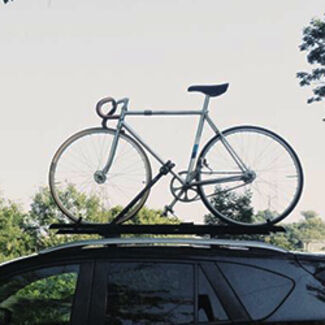
Shane H.

11/30/2021
Product has no issues. Perfectly made. I gave bought several items and I am happy with the service and customer service. These guys and gals are awesome. I will be buying more stuff. Gotta keep it on the DL from my wife. Haha
The oil bath cap that I received was a perfect fit. It screwed right on and fits tightly. I strongly advise those installing this type of cap to obtain the properly sized socket in which to tighten it, i e, a large set of vise grips or similar tool.
One of the simplest, best looking improvements you can make to your trailer. Recieved mine in 4 days, standard shipping.

As described and work fine
My first experience with oil bath hubs, I was told to keep a couple of these on hand. These are a great value and fit perfect! I would like to be able to buy the O-Ring, but couldn't find it on the website.
PROMPT DELIVERY AND PERFECT FIT
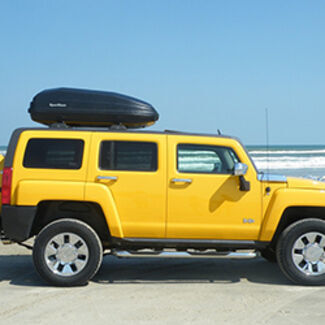
Kevin

8/26/2022
still working great!
I am refurbishing an older trailer, Parts were well represented and were delivered on time, as promised.
Product fit perfect. Product has actual part number visible in photo. Comes with all parts needed for easy exchange. Super product.
The CSR was very helpful, suggested the right shipping option. The part was delivered on time and exactly what I needed. I would order from e-trailer again, thanks.
Came fast. Came complete. Appear correct for application
I have ordered numerous items from these fine folks. Always arrived as advertised, good quality products and very customer oriented. Plus my shipping is always fast. I will shop here again and again

great product, perfect fit. I have bought a few with no problems
Had to call back plug was missing but they took care of it right away.
Thank you
See what our Experts say about this Redline Trailer Bearings Races Seals Caps
- What is the Torque Rating for Trailer Hub Oil Cap Kit # 21-36There isn't a special wrench that we carry for oil caps such as # RG04-270. But you probably won't need one because the manufacturer recommends to install the caps to 20-30 foot pounds. You might be able to get to that by hand. Otherwise some channel locks could work. Just be cautious to not over-tighten.
view full answer... - Correct Replacement Oil Bath Cap for a Dexter 10K Axle The Replacement Oil Cap Kit for 9,000-lb to 15,000-lb Dexter Axles part # RG04-270 is a match and what you're looking for.
view full answer... - What Axles Does Replacement Oil Cap Kit # RG04-270 Fit That's odd. The part # RG04-270 that you referenced is SUPPOSED to fit all Dexter 10k oil bath hubs manufactured prior to 2009. Is it possible it's a 9k axle? This cap fits the following: 9,000-lb Axles manufactured from October 1989 to July 2009 10,000-lb Axles manufactured prior to July 2009 12,000-lb and 15,000-lb Heavy-duty axles
view full answer... - How to Determine if the Oil Cap Kit # RG04-270 Would fit HubsThe Oil Cap Kit # RG04-270 that you referenced is designed to fit the following axles: Dexter 9K (after 10/1989), 10K GD (2-piece drum), and 10K to 15K Dexter axles. You will need to confirm that you have one of those axles to know if the # RG04-270 would work for you. There should be a plaque or sticker on the frame of your trailer near the coupler that should list what axles you have. There might also be the same on the axles themselves for you to determine which one.
view full answer... - What Could Cause a Trailer Oil Bath Cap to CrackIt is entirely possible that the cap for an oil bath hub could get warm enough that touching cold water could cause it to crack but the cap would have to be very hot for that to happen. It is unlikely that it would get that hot unless there was no oil in the hub so you will want to check that for sure. Also if the caps were over-tightened that could stress them and then, once moving, the centrifugal force could cause further damage. We have several different oil caps, see link, but none...
view full answer... - Replacement Oil Cap Kit for 9K Dexter AxleWe do offer a Replacement Rubber Oil Cap Kit for Dexter 9K axles made after October 1989, part # RG04-270, which includes the cap, gasket and plug. The rubber cap is not available alone. The cap's dimensions are 3.984-inches (O.D.) and 3.573-inches (I.D.).
view full answer... - Looking for Oil Cap to Replace Dexter 21-17I have been unable to find a replacement for a 21-17 Oil Cap (even on Dexter's website), but if you'll use a digital caliper to get the dimension of your hub bore, I'd be happy to continue looking for you. The measurement needs to be precise, a ruler or measuring tape wouldn't be accurate enough. I'll also need to know if your hub bore is threaded.
view full answer... - Diameter of the Threaded Portion of the Oil Cap Kit # RG04-270 The diameter of the threaded portion of the # RG04-270 that you referenced is 3.860 The Oil Cap Kit # RG04-270 that you referenced is designed to fit the following axles: Dexter 9K (after 10/1989), 10K GD (2-piece drum), and 10K to 15K Dexter axles. You will need to confirm that you have one of those axles to know if the # RG04-270 would work for you.
view full answer... - Recommended Replacement Oil Bath Cap Kit for Dexter 21-36My contact at Dexter Axle confirmed that Oil Cap Kit # RG04-270 is a correct replacement for the older part reference 21-36 which is now discontinued. Both oil caps have the same 4-inch diameter and are fully interchangeable. The only difference is where the oil line is located.
view full answer... - Trailer Hubs Leak Oil After Installing New SealIf you have oil leaking from the rear of the hub then that would indicate you either have the wrong size seal, you are over torquing the spindle nut, or you just have too much oil. I recommend you use the serial number on the axle that way you can reach out to the manufacturer to confirm you have the correct size. The spindle nut on most axles will be torqued down (Usually 50 Ft. Lbs.), backed off, and then tightened hand tight. There should be a fill line on the oil cap to go off of. If...
view full answer... - Replacement Oil Cap for LCI Oil CapThank you for the photo of your two oil caps which differ in their depth. The deeper cap on the left appears similar to our part # RG04-250. The cap on the right appears to be part # RG04-270. Please refer to the linked video for part # RG04-250 for key dimensions. I went to our warehouse to measure this item too and its overall exterior depth is approximately 2-3/4-inches.
view full answer... - Oil Cap Replacement for Dexter 21-37 Oil CapI spoke with my contact at Dexter and he said the 21-37 oil cap is obsolete and was replaced with the 21-36 oil cap, # RG04-270. This cap includes the o-ring and plug.
view full answer... - Center Plug for Oil Bath Hubs AvailabilityThe plug that is included with the Oil Cap, Plug and O-Ring for Dexter 7-9K Trailer Axles part # RG04-230, 9,000-lb to 15,000-lb Dexter Axle part # RG04-270 and the 9,000-lb and 10,000-lb Dexter Axle part # RG04-300 is not available individually through our sources. I have linked the options available for you to check out.
view full answer... - Replacement Hub Seals for Dexter 12,000 lb AxleFor your Dexter 12,000 lb axle the seal you are looking for based on my research is the # 10-56. It has an inner diameter of 3.125 inches and an outer diameter of 4.5 inches. This will work well for oil or grease. If you are needing the other seal for an oil bath, you would also want the Replacement Oil Cap Kit for 9,000-lb to 15,000-lb Dexter Axle # RG04-270 which comes with the cap, o-ring, and rubber plug.
view full answer... - Replacement Oil Cap & Oil Seal For 12,000 lb Dexter AxleWe do have the correct replacement oil cap and oil seal for your 12,000 lb Dexter axle, though it will be a different part than the one you mentioned. The correct seal and cap will be the following two parts: - Oil Seal # 10-56 - Replacement Oil Cap Kit for 9,000 lb to 15,000 lb Dexter Axle # RG04-270 These will be exactly what you need, and the Oil Cap Kit contains the oil cap, O-ring, and plug.
view full answer... - Is there a Trailer oil Bath Hub Oil Cap for a Dexter 6,000 Pound AxleThe 21-36 oil cap, # RG04-270, fits 9K (after 10/1989) and 10K GD (2 piece drum), and 10K to 15K Dexter axles. The 21-35, # RG04-230, fits 6K to 8K ( and 9K before 10/1989) Dexter axles. It would be too large with its 2-7/8 inch thread diameter. All of these oil caps are for oil bath hubs. If you are replacing a dust cap, you probably have regular hubs. For bearing protectors measuring 2.441 inches, go with the stainless steel bearing Buddies, # BB2441SS, or, if the hub is threaded, #...
view full answer... - Recommended Electric Brake Magnet And Hub Components For Dexter 9000-Lb AxleThe Replacement Magnet Kit for your Dexter 12-1/4 inch brake assemblies is part # BP01-301. The kit includes the magnet, the spring, and the clip. For a Dexter 9K system manufactured after October 1989, the unitized seal you need is part # 10-51. If your axle was made before October 1989 the seal you need is part # 10-63. The Oil Cap Kit is part # RG04-270. This kit includes the cap, O-ring, and plug.
view full answer... - Availability of Dexter Part Numbers 005-070-00 006-096-00 005-071-00 010-050-00 021-036-00 046-032-0We have the part # 46-32, # 6-96, # 5-71, # RG04-270 and the part # 010-050-00 but we do not have the other part you mentioned.
view full answer... - Availability of Bearing Buddy to Replace 4 Inch Diameter Oil Cap The largest Bearing Buddy available is a 2.717 inch diameter # BB2717SS (stainless steel) or # BB2717 (chrome plated), which means you wouldn't be able to convert your oil bath hubs to greased ones. However, we do carry the direct replacement for your Dexter Oil Cap Kit number K71-148-00, the Redline # RG04-270, which includes the cap, gasket and plug and is designed for 9K-15K Dexter Oil Bath Hubs like # K08-288-90.
view full answer... - Can Existing Grease Lube Hub Assembly be Replaced With Oil Bath LubricationI would recommend that you install Trailer Hub & Drum Assembly, part # 8-219-9UC3, on your trailer. This hub is identical to the Trailer Hub & Drum Assembly, part # 8-219-4UC3, that you referenced except it is setup for oil bath bearings instead of grease bearing. These hubs have a 2-1/8 inch seal. The Oil Cap Kit, # RG04-270, is threaded and would only work on hubs that are threaded for screw in style caps. This would not work on the # 8-219-4UC3 as it takes press in style caps.
view full answer... - Dexter D120 Axle Replacement PartsYour Dexter D120 axle is rated for 11,999.80lbs, has a spring center measurement of 45.5" and track width of 74". It is an underslung axle that uses 3" wide 30" slipper springs rated at 6,000lbs each. The brakes are 12-1/4" x 5" electric brakes and the hub is an oil bath with 8 on 6.5" wheel bolt pattern. It was produced in March of 2000. Electric Trailer Brake Kit # AKEBRK-12 Dexter Trailer Idler Hub Assembly # 8-214-8UC1 Inner Hub Bearing # 3984 Inner Race # 3920 Outer Hub Bearing #...
view full answer... - 12,000 lb Electric Trailer Brakes & Replacement Oil Seal & Bearings For 12k Dexter AxleI was able to find everything you need for your 12,000 lb Dexter axles; the electric brakes, oil cap kit, oil seal, bearings, and races. I verified with Dexter that these are indeed the correct parts for your 12k axles. I'll go ahead and list out each of the parts you need to make it easier to order: - Electric Trailer Brake with Dust Shield - Self-Adjusting - 12-1/4" - Left Hand - 12,000 lbs # AKEBRK-12L - Electric Trailer Brake with Dust Shield - Self-Adjusting - 12-1/4" - Right Hand...
view full answer... - Replacement Hub and Drum Assembly for 15,000 Pound AxlesAlthough I do not have an option to retrofit your hubs I do have a solution. What I can offer is a complete replacement with the Dexter Trailer Hub and Drum Assembly for Heavy-Duty 15K Axles # DX78QR. If you're just looking for replacement races, bearings, and seals we have those available as well. This hub uses an 8 on 275 mm bolt pattern. It would also require switching to oil bath from the grease. In addition to the hub and drum assembly, or for replacement bearings and seals, you would...
view full answer... - Disc Brake Conversion Parts For 10,000 lb Dexter Axle Made Before 2009Thank you so much for that information, and we can get you everything you need to convert to a disc brake set up for your 10k Dexter axles. While there isn't a single kit, we do have all of the parts you need, and let's start with the brake kit itself: - Kodiak Disc Brakes - 11" Rotor - 8 on 6-1/2 - Raw Finish - Leaf Spring - 10K Dexter and Lippert # K2R1058D11 This kit is designed to fit your 10k Dexter axles from pre-2009, which is why the year is important, and has all the parts you...
view full answer...
Do you have a question about this Trailer Bearings Races Seals Cap?
Info for this part was:








At etrailer.com we provide the best information available about the products we sell. We take the quality of our information seriously so that you can get the right part the first time. Let us know if anything is missing or if you have any questions.











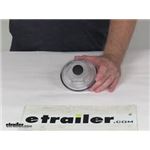




















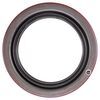
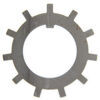

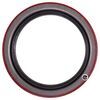






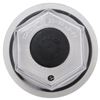






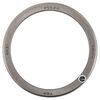





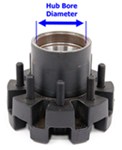

Hlc
9/28/2015
Yes, these items are still performing as expected no issues what so ever.Thanks for checking in.